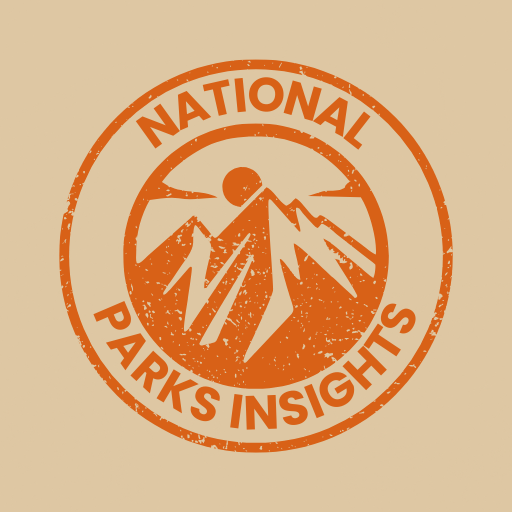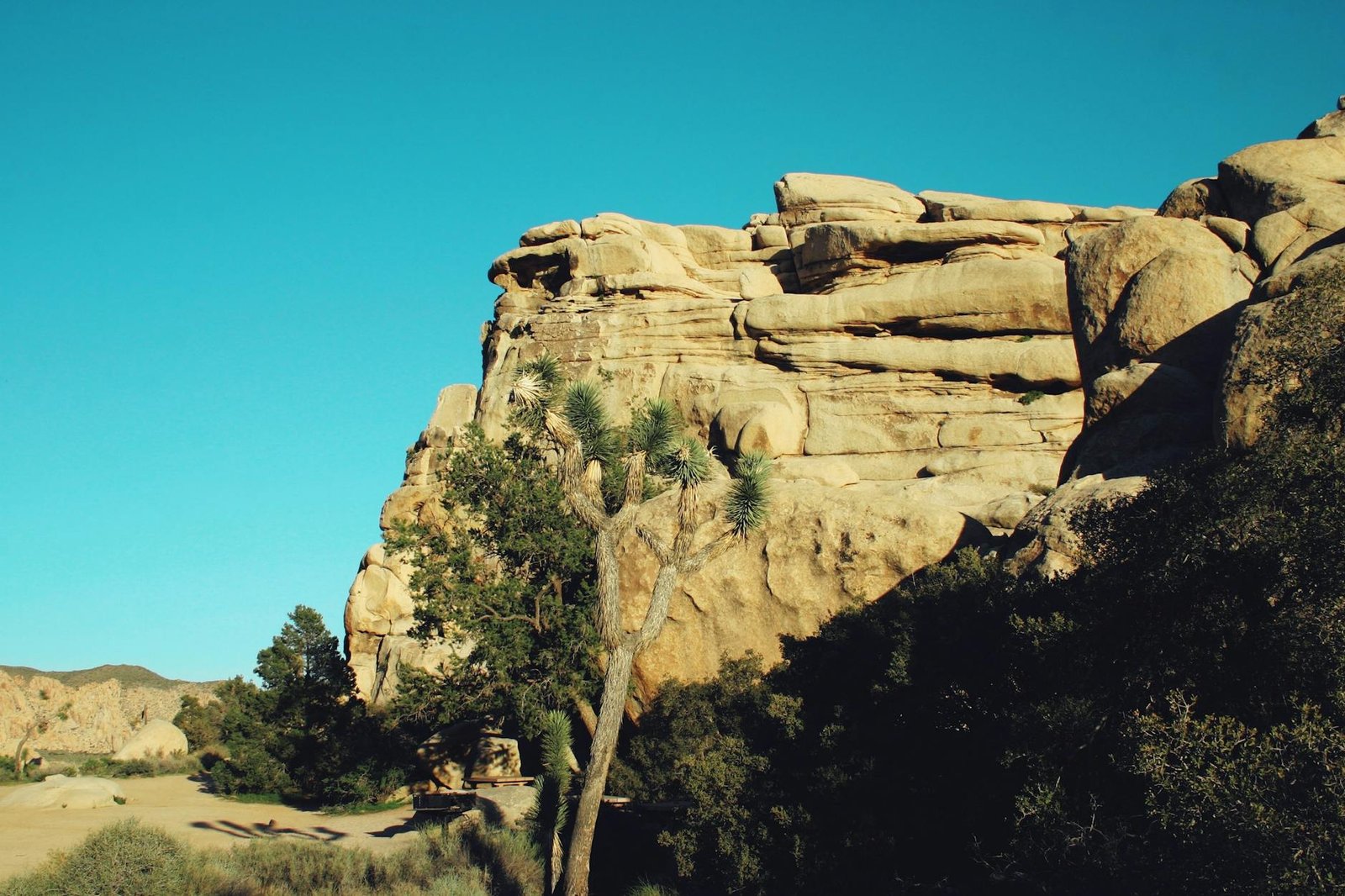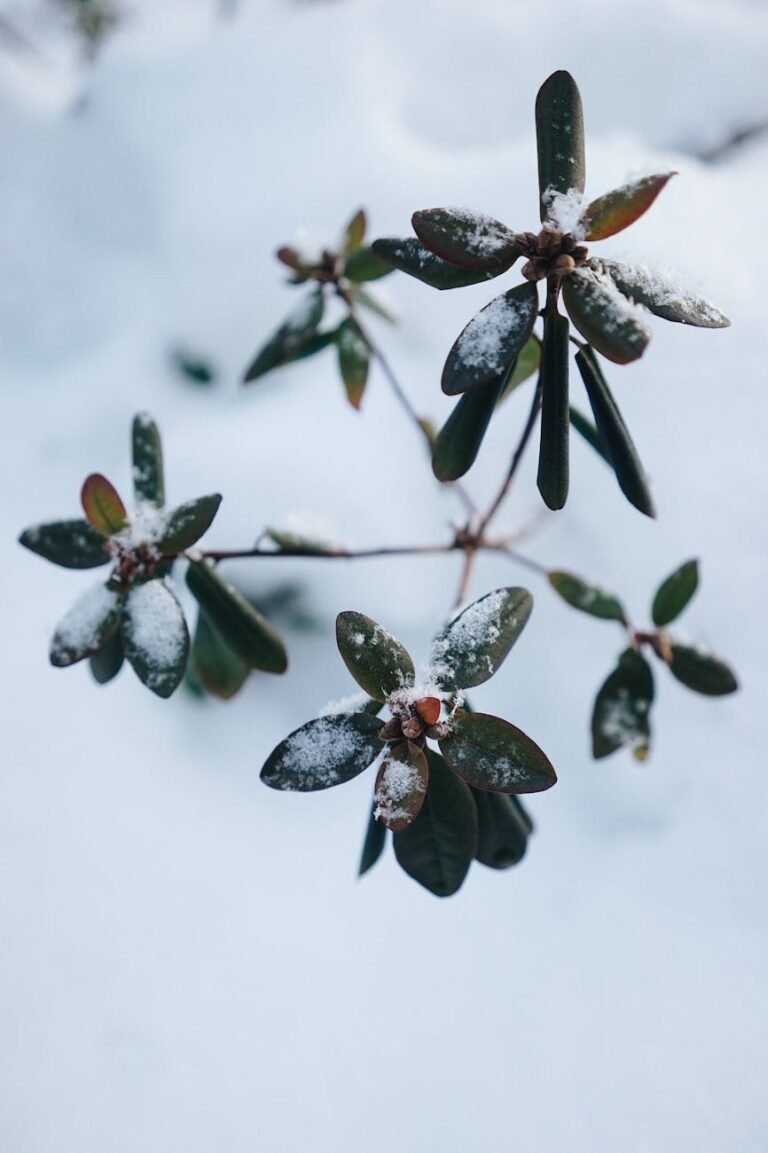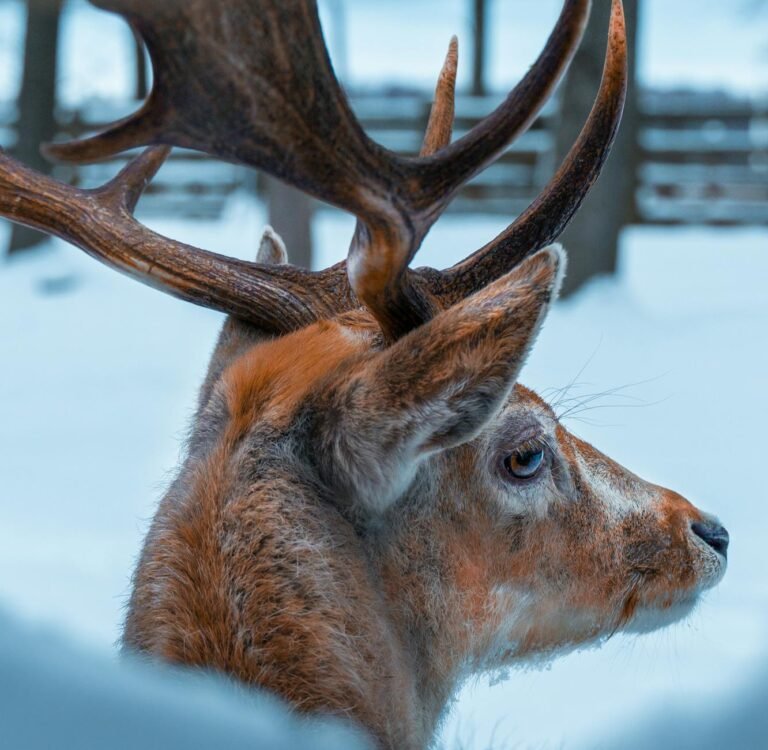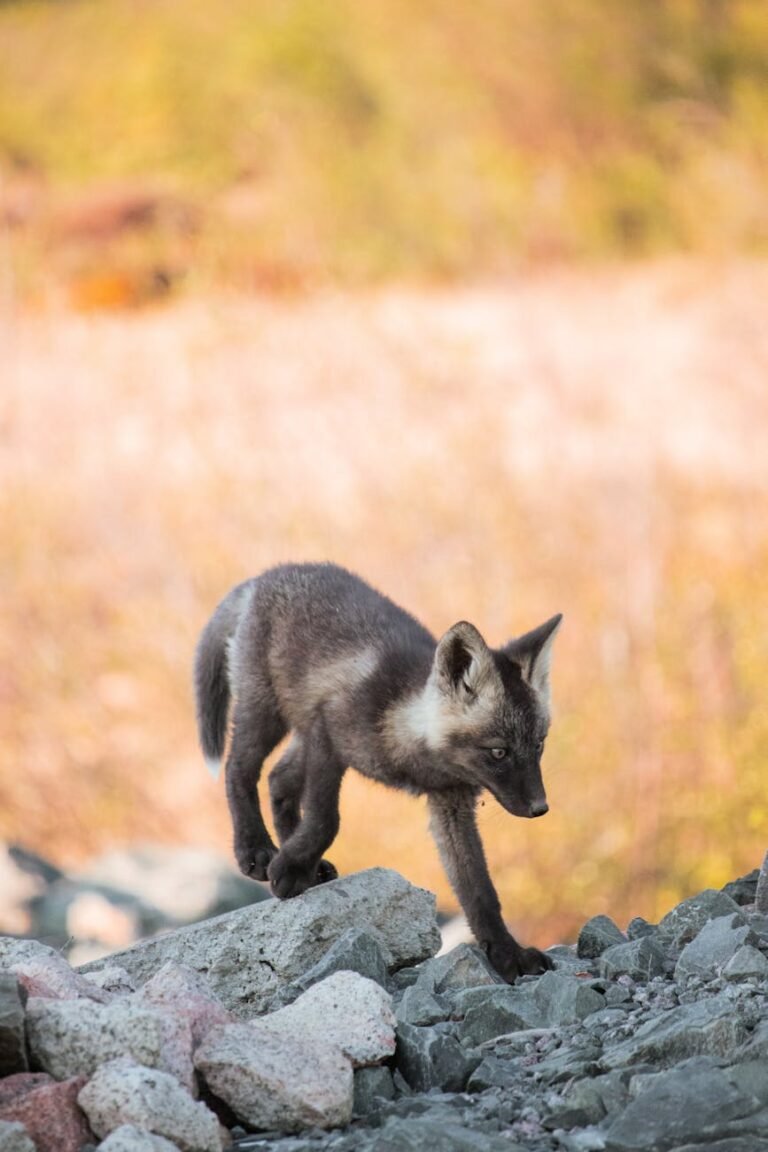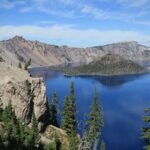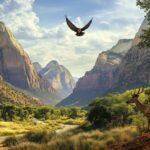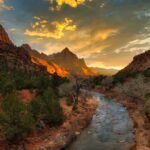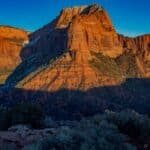Arctic National Park Wildlife
Howdy! Welcome to the Arctic National Park, a wild stretch of land bustling with fascinating critters and tales of the folks who’ve called it home for ages. As you stomp through this untamed territory, you’ll come face-to-face with an assortment of creatures and discover the tight-knit bond between local communities and their icy backyard.
Diverse Wildlife Population
If critters tickle your fancy, the Arctic National Park’s got you covered. Get your cameras ready because you might spot all three types of North American bears: the ever-resourceful black bears, hefty brown bears known as grizzlies, and those massive polar bears chilling by the sea. The park’s buzzing with life, from Porcupine and Central Arctic caribou herds hustling through to Dall sheep sporting their swirly horns, and ancient muskox just chilling out. And let’s not forget the wolves and wolverines adding drama to the mix. Bird nerds, take note: over 200 bird species call this place a hotel each year, including those marathon-running Arctic terns (U.S. Fish and Wildlife Service).
| Species | Fun Fact |
|---|---|
| Black Bear | Can chomp on almost anything |
| Brown Bear | Yup, that’s the famous grizzly |
| Polar Bear | Born to chill in the freezing waters |
| Porcupine Caribou Herd | It’s like a moving city, size goes from 75,000 to 500,000 (National Park Service) |
| Central Arctic Caribou Herd | They’re park regulars |
| Dall Sheep | They’ve got horns like curly fries |
| Muskox | Sporting their own winter coats for thousands of years |
| Wolves | Top dogs around these parts |
| Wolverines | Little packages of fierceness |
| Birds (200+ species) | Packed with long-distance champs like the Arctic terns (National Park Service) |
Indigenous Peoples’ Connection
Now, this park isn’t just about the critters. The local folks have been buddies with this land for longer than you can count. They’ve been living off the land, using what they know about it for food, clothes, and crafting things. Their way of life moves in sync with nature’s big calendar, especially the wanderings of the wild animals. This mix of tradition and nature-loving is a huge piece of what makes visiting here so special.
Local tribes have always leaned on animals like caribou, moose, and birds, not just for meals but for sewing gear and tools too. Their lives vibe with the seasons and the critter traffic. This partnership with nature points out why keeping this place thriving is a big deal—not just for the animals and the scenery, but for the stories and culture too.
Swing by the Arctic National Park, peek at the jaw-dropping wildlife, and soak in the wisdom from the indigenous tribes who’ve thrived in this frosty frontier. Want to dig deeper? Check out Arctic National Park Tours and scope out our Arctic National Park Travel Guide.
As you brave this snowy adventure, remember to respect the wild and the past. You’re in for one heck of a ride in the Arctic National Park!
Iconic Creatures in the Area
When you mosey on over to Gates of the Arctic National Park, you’re stepping into a world where the wild reigns supreme and the critters own the place. Let’s dig into the awesome animals you’re bound to bump into on your adventure.
Bear Species
In this vast expanse, you might just run into all three kinds of North American bears: black, brown, and those magnificent polar bears. Alaska is showing off with over half of the continent’s brown bears hanging out here (National Park Service). Catching a glimpse of a grizzly snagging some salmon or a black bear rummaging for snacks is a memory that’ll stick with ya.
| Bear Type | Typical Weight (lbs) | Habitats |
|---|---|---|
| Black Bear | 200-600 | Woods, hills |
| Brown Bear (Grizzly) | 400-800 | Hills, icy plains |
| Polar Bear | 900-1,600 | Coastlines, floating ice |
Caribou Herd
Right at the heart of the Arctic National Wildlife Refuge, the grand Porcupine and Central Arctic caribou herds roam freely. These splendid creatures trek across the tundra, clocking serious mileage every year. Watching a caribou parade is truly something else, a full-on display of nature’s untamed beauty. Interested in where these majestic herds wander? Check out the Gates of the Arctic National Park map.
| Caribou Herd | Estimated Headcount | Annual Trek Distance (miles) |
|---|---|---|
| Porcupine Herd | 218,000 | Up to 1,500 |
| Central Arctic Herd | 70,000 | Up to 400 |
Data from the U.S. Fish and Wildlife Service
Birds Population
Over 200 feathered friends from every corner of the states and beyond find a seasonal home in the Arctic National Park (U.S. Fish and Wildlife Service). From awe-inspiring hunters of the sky to enchanting songsters, the park is a paradise for those who fancy birdwatching. Keep those eyes peeled and binoculars ready for the speedy peregrine falcons, mystical snowy owls, and eerie-calling loons.
| Bird Type | Cool Trait | Usual Hangouts |
|---|---|---|
| Peregrine Falcon | Speed demon | Ledges |
| Snowy Owl | Snow-white feathers | Icy fields, tundra |
| Common Loon | Hauntingly beautiful calls | Lakes, streams |
Curious about how the frosty air affects life here? Peek at our Gates of the Arctic National Park weather rundown.
By getting clued in on the vibrant wildlife tapestry of the Arctic National Park, you’ll see why saving these critters is a big deal. Whether you’re in awe of the bears, mesmerized by the caribou, or enchanted by the birds, Arctic National Park wildlife promises you an unforgettable nature escape. Craving more adventures and advice? Jump to our things to do in Gates of the Arctic National Park section.
Adaptations for Survival
Exploring the wildlife at the Gates of the Arctic National Park is a one-of-a-kind experience. Here, critters have come up with clever tricks to make it through the chilly Arctic weather. They move around with the seasons or take long naps to stay out of trouble.
Seasonal Migrations
Many creatures in the Arctic National Park are seasoned travelers, hitting the road to get the most out of what’s around. It’s basically survival on the go.
| Species | Migration Pattern | Purpose |
|---|---|---|
| Caribou | Across icy tundra | Sections of the park serve different needs each season (National Park Service) |
| Whales | North when ice says goodbye | Feast time on tasty plankton (National Park Service) |
| Birds | From every corner of the globe | Raiding the pantry of the Arctic (National Park Service) |
Birds aren’t messing around when they fly in from far away, all for a plate of summer insects. Caribou, on the other hand, trek all across the tundra to find those bits of green that take their fancy in each season. These road trips aren’t just for fun—they help ensure their survival and bolster their chances to grow their families.
Curious about their adventures? Peek at the arctic national park travel guide.
Hibernation and Dormancy
For many Arctic animals, surviving the cold months means hitting the “pause” button on activity for quite a while, sometimes up to eight months! This keeps them from burning through their energy supplies when not much food is lying around.
| Species | Adaptation | Details |
|---|---|---|
| Ptarmigan | Feathered feet | Snowshoe effect keeps ’em cozy (National Park Service) |
| Beavers | Stocked-up lodges | Keep it toasty and full (National Park Service) |
| Voles and Lemmings | Snow tunnels | Stay under cover and warm (National Park Service) |
Take the ptarmigan, which has woolly tootsies that work like snowshoes, letting it tread on snow and dig in to keep snug. Beavers stay under the roof of their lodges, relying on caches of snacks. And those little voles and lemmings? They’re like expert tunnel makers, crafting their own igloos in the snow to hide out from the chill. Before winter sets in, many beef up to cut back on scavenging when they should be chilling.
To see how these animals brave the elements, find our guide on gates of the arctic national park weather.
Learning about these crafty critters’ survival tricks turns your park visit into a deeper dive into nature’s playbook. Whether you’re watching caribou parades or catching a ptarmigan showing off its cool snow-walk, you’ll come away impressed with the Arctic’s tough residents. For a front-row seat to these wonders, check out arctic national park tours.
Human Impact and Debates
What folks do and how it shakes up the Arctic National Park and its critters sparks a lot of chatter and efforts to keep things in balance. Let’s dig into how humans are mixing it up, especially when it comes to fun stuff like exploring the outdoors, and the sticky topic of oil and gas hunting.
Recreational Activities
Arctic National Park is the playground where your spirit of adventure can roam free. Whether you’re into riding the rush on river rapids, trekking through the wild, pitching a tent under the stars, or eyeballing the wildlife, there’s a piece of wilderness pie here for you. And, listen, if polar bears are on your bucket list, this spot’s got your number (Britannica).
- River Rafting: Paddle through untouched rivers and catch glimpses of critters you won’t see back home.
- Hiking and Camping: Tap into your inner explorer with a backpack, a sturdy pair of boots, and a campsite far from the beaten path.
- Wildlife Viewing: Get your binoculars ready for polar bears and caribou—Mother Nature’s celebrities.
- Hunting and Fishing: Allowed within the park—you just need to follow the rules.
You mostly get there by hopping on a small plane due to how off-the-grid the park is, although there are some trails starting from the Dalton Highway if that’s more your speed. Before heading out, the gates of the arctic national park map could be your best friend.
| Activity | How to Get There | Cool Things/Creatures |
|---|---|---|
| River Rafting | Fly-in | Fresh river settings |
| Wilderness Hiking | Fly-in | Meet polar bears, caribou |
| Camping | Fly-in | Far-off nature spots |
| Wildlife Viewing | Fly-in | Animal snapshots |
| Hunting and Fishing | Tough to Access | Local wildlife and fish |
Oil and Gas Exploration
Digging for oil and gas in the Arctic National Wildlife Refuge is a hot potato among different folks—talk about a hornet’s nest of opinions! Things really heated up after folks struck oil at Prudhoe Bay back in 1968 (Britannica). The 1002 Area is a particular flashpoint, loaded with possibly billions of barrels waiting underground.
Those for it say there’s a goldmine in terms of jobs and keeping the lights on. But the other side worries about what might happen to the wildlife and the land they call home.
Before anything can get going, Congress has to sign off—this is more than just about digging in the dirt. It’s part of a bigger chat about finding a balance between fueling our lives and protecting the earth’s goodies.
| Issue | Proponents’ Angle | Opponents’ Angle |
|---|---|---|
| Economic Impact | More jobs, better energy options | Environmental harm in the long run |
| Environmental Concerns | Tech makes risk low, they say | Fragile land and critter issues |
| Legal Stuff | Needs Congress’s go-ahead | Lots of conservation hurdles |
If you’re curious about the arguments buzzing around, check out these places championing various sides, thumb through the gates of the arctic national park facts, or even grab yourself an arctic national park travel guide for more depth. Learning about the gates of the arctic national park weather could also gear you up for the trip.
Get smart, play nicely with Mother Nature, and maybe you can help protect this wild wonderland for the folks coming after us.
Ecological Disruption
Okay, so Arctic National Park is one of those jaw-droppingly beautiful spots where nature’s still in charge, but it’s got some serious issues on its hands. Climate change is throwing a wrench in the works, and oil drilling is like poking a bear with a stick—never a good idea if you wanna keep that balance intact.
How Climate Change is Messing Things Up
The climate up there isn’t playing nice anymore. The park is experiencing weird stuff, like thinner ice packs, warmer permafrost, and glaciers that seem to be shrinking faster than your warm soda can on a hot day. That’s shaking things up big time for everything that lives there.
Our soil’s getting toastier, which means shrubs are pulling a reverse migration headed north in a trend known as shrubification—basically trees coming to a neighborhood near you. This attracts moose, beavers, and songbirds but takes away the cozy homes of caribou that love the open tundra filled with lichen. Plus, warm shrubs are like waving a match over a gas can—wildfires could easily flare up, putting even more wildlife at risk.
Check out this table of how climate is messing with stuff:
| Climate Gone Haywire | Wildlife Chaos |
|---|---|
| Melting glaciers | Polar bears losing their crash pads |
| Toasty permafrost | Plants throwing a house party and not inviting lichen |
| March of the Shrubs | Caribou eviction notices |
| Thinning pack ice | Polar bears looking for floaties |
The Skinny on Oil Drilling
When it comes to oil and gas, opinions fly like mosquitos in the summer, but here’s the skinny: it messes up Mother Nature’s house. Drilling digs up the ground, leaving wildlife habitats fractured like a bad haircut and getting everybody cranky.
The noise from all those machines isn’t exactly lullaby material—it throws off animals’ groove, messes with breeding, and generally creates chaos. Plus, when oil spills happen, it’s like dumping a gallon of paint on a Monet painting—nature’s masterpiece takes a real hit. Oil seeps into water and dirt, spelling trouble for every creature that calls the place home.
Here’s a quick look at what oil drilling can do:
| Digging and Drilling Damage | Wildlife Whiplash |
|---|---|
| Habitat mayhem | Migration routes resemble obstacle courses |
| Noise factory | Critters losing their rhythm and rhyme |
| Oil spill nightmares | Water, soil becoming toxic tubs of trouble |
| Giant machines roaring | Homes get a terrestrial makeover nobody asked for |
If you’re thinking of packing a bag and checking out Gates of the Arctic National Park, it’s good to know what’s happening behind the beautiful Instagram shots. For when to go when the park is dressed in its best and other handy tips, our arctic national park travel guide and weather info should be your go-to reads.
Conservation Efforts
In the Arctic National Park, we’re on a mission to protect the critters and plants that call this frosty place home. We’re not just saving polar bears and caribou; we’re also raising the flag for their habitats. Our mission is about keeping this gorgeous slice of Mother Nature in one piece amid all that global warming and other human mischief.
Protecting Biodiversity
First things first, let’s talk about the stars of the show. The Arctic is like the Disneyland of wildlife. Imagine a bajillion acres (actually, over 42 million) teeming with polar bears, caribou, and a sky-load of migratory birds. Think wolves, muskoxen, and those grizzly neighbors, just hanging out in America’s coldest corner. But it’s not all selfies with wildlife. There’s a serious side to this. These creatures face threats from climate change, oil rigs, and all sorts of other human shenanigans.
Climate change is turbocharging here, heating things up four times quicker than elsewhere. Yikes! So, we’ve got to step up and give these ecosystems a fighting chance. Check out this quick peek at the status of some key park natives:
| Species | Population Status |
|---|---|
| Polar Bears | Threatened |
| Caribou | Stable |
| Wolves | Stable |
| Muskoxen | Stable |
| Grizzlies | Stable |
These fluctuating weather moods are meddling with migration and how well wildlife gets through the chilly months. Keeping the wildlife in this park safe is a win for the planet, and it keeps the environment’s health in check too.
Advocacy for Preservation
Advocacy is our secret weapon for protecting the Arctic National Park. Indigenous folks have been living in harmony with the land for what seems like forever. Their wisdom and relationship with the area are game-changers for our conservation plans.
For 60 years, people from all walks of life have been teaming up to save the Arctic’s wildlife, wilderness, and legacy. The push for energy extraction is on the rise, making grassroots advocacy efforts even more important.
Wanna get involved? Here’s a quick hit list for anyone who wants to join the fight:
- Get in with conservation groups and roll up your sleeves.
- Chat up the park’s want-to-be-saved wildlife and tell folks why this matters.
- Be a thoughtful tourist—leave only footprints, as they say—when you hit up Gates of the Arctic National Park.
Curious about more ways to help and explore? Head over to our arctic national park travel guide and look into arctic national park tours. By diving in now, we ensure this icy wonderland sticks around for anyone who comes after us.
